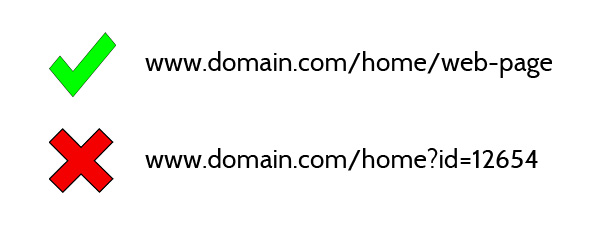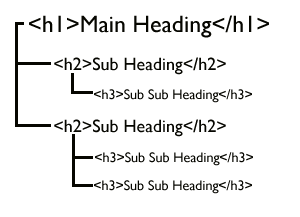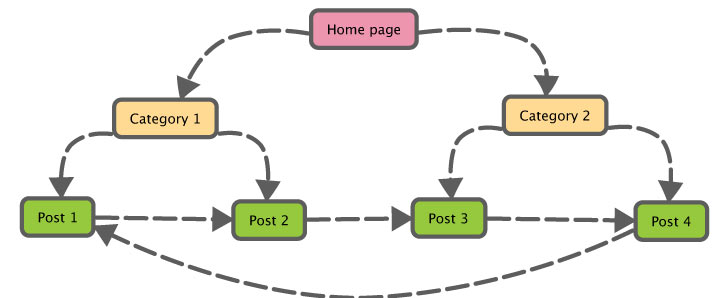Search Engine Optimization is one of the most parts of a website’s reputation over the internet. There are two processes of SEO – On-Page SEO and Off-Page SEO.
Both of these types are equally important to rank a website on top of SERP. However, here we are going to discuss the On-Page SEO Checklist for 2019-2020 only. The efficient effort on On-Page SEO is the first thing you should do for indexing of your website on the targetted keywords.
On-Page SEO is the technique to optimize a specific webpage so that it creates a relevancy according to the search query and search intent of the user.
So instead of delaying it further, let’s discuss the on-page SEO techniques which you all must follow to index your web pages on correct keywords
On- Page SEO Checklist 2019-2020 – Factors Which You Must Not Miss
#1. Keyword Research
After knowing the niche’s audience, the first thing we do in On-Page SEO is Keyword Research. The SEO practices are changing constantly, but one thing which remained intact is Keyword Research. First, understand that which are your primary keywords and according reach the specific targeted audience. According to the recent study, ranking on long tail keywords can take you to your specific audience as compared to the short tail keywords. The tools which can assist you in Keyword Research are Google Adwords Keyword Planner Tool, KW Finder, SEMRush, Ahrefs, Longtail Pro. Keyword research is the first task you should perform while considering on page SEO optimization checklist.
#2. Include Your Keyword In Your URL
The practice of including the primary keyword in the URL will make the Google understand that what the page or post is all about. According to SEO experts, it is been observed that keyword in the URL is the most important part of SEO factors checklist.
#3. Use Short and SEO Friendly URLs

Short URLs are easily visible and are quite easy to rank on Google. So, always try to keep the URLs as short as possible as the Long URLs disturbs the structure of the URL. In the recently conducted survey of 1 million Google search results, the pages or post with short URLs are likely to rank better in Google.
#4. Use Your Keyword Once In The First 150 Words
In the present scenario, content is the king. Google pays special attention to the first 150 words of your content. So, use and highlight the targeted keyword in the first 150 words of the content. Make sure that you don’t make the overuse of the keywords.
#5. Start your Title with the Keyword
Making the use of the targeted keyword in the front end of the title tag can provide you with the rank in the SERP. This is quite an old technique used the SEO Professional to rank in Google. The recommended length of the title tag is 50-60 characters.
#6. Use Synonyms and LSI Keywords
It is a myth that only the placement of keywords for the multiple numbers of times will help you in getting the rank. No doubt it is important to place the keywords in the right position but the overuse of keywords is strictly prohibited. There is a technique in SEO known as Keyword Stuffing in which a large number of keywords are inserted into the content and meta description to get a rank. This is a false practice and now Google is not accepting any such kind of content. Therefore, instead of going with Keyword Stuffing, use the synonyms of the keywords in the appropriate way or use the LSI Family of the main keyword. You can use the LSIGraph.com to fetch the keyword family of the targeted keyword.
#7. Embed Title Tag Modifiers
Modifiers are the words which add to the sense of the head noun. By embedding or by making the use of modifiers along with the title tag can help you in getting the rank in SERP. The practice of using modifiers in the title tag helps in ranking on a number of long tail queries and also improves the Click Through Rate (CTR).
#8. Use Your Keyword in H1, H2 or H3 Tags

The use of a keyword in H1, H2 or H3 tags doesn’t make much effect on the SEO but it helps in improving the rank in Google. Also, it is handy in defining the structure of content. Try to wrap the targeted keyword and its family in the H1, H2, and H3 Tags.
#9. Use Internal Links

A page on the website without any internal links is known as Orphan Page, which is bad for SEO. Always try to link 2-5 previously published articles with the newly published one.
#10. Use Authority External Links
The use of external links make the content trustworthy and improves its relevancy score. Link externally with the 2-5 authoritative website for the better ranking in Google.
#11. Meta Description
Meta Description is one of the most important checkpoints of On page SEO checklist. Target and use the main keyword in the meta description with doing the keyword stuffing. The recommended length is 150-160 characters for Meta Description.
#12. Optimize the Images
Google’s Image Search Engine doesn’t recognize or understand the image. It only understands it with the help of ALT text. So, use the keywords in the ALT Text, Title, and caption of the image. Images with light weight are the most suggested ones for SEO.
#13. Detailed Content
As we have already mentioned that Content is the King. So, make a detailed content around the targeted keyword. Place the keywords properly along with the LSI Keywords. Add proper internal and external links to the content to improve its relevancy. The recommended length is 1800-2000 for a good blog post.
#14. Improve the User Experience
Improve the user experience of your website and content to retain the user for a longer period of time and to get the repeat users. To improve the user experience, make the website easy to navigate, make the user-friendly, make it responsive, and most importantly improve its speed.
#15. Social Sharing Buttons
Social Sharing Buttons are one of the handiest things for a blog post, especially for the informational ones. It will improve the share count of the blog post.
There are the 15 checkpoints of On-Page SEO Checklist of 2019-2020. Implement these checkpoints and improve the On-Page health of your website. If you have any query or opinion, do ask it through the comments. Thanks for reading.
